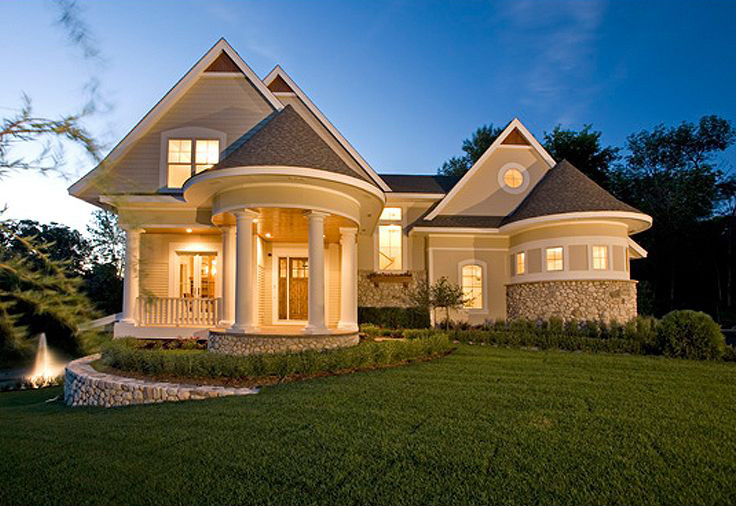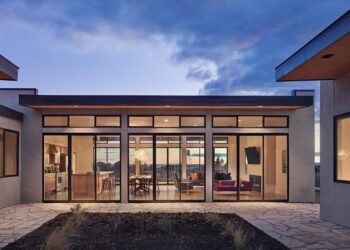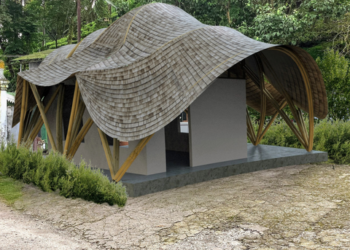In a world increasingly driven by mass production and standardized aesthetics, Unique Home Design stands as a testament to personal expression, architectural innovation, and the pursuit of design distinction. Far from conforming to conventional blueprints, these residences are conceived as bespoke reflections of their owners’ personalities, passions, and lifestyles, pushing the boundaries of creativity, functionality, and sustainability. Understanding the philosophies, elements, and profound impact of unique home design is crucial for aspiring homeowners, architects, and anyone who believes that a living space should be a truly exceptional work of art, telling a story that is uniquely its own.
The Canvas of Individuality
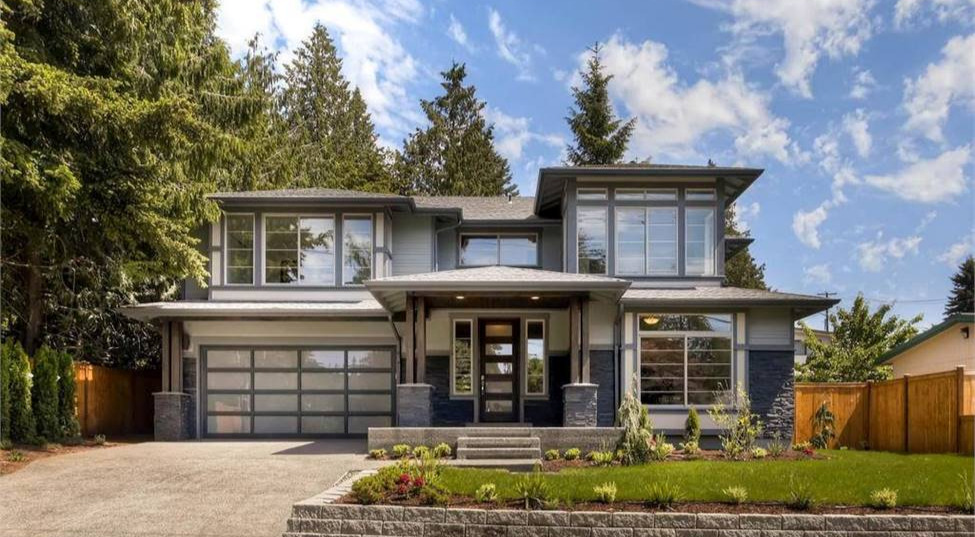
For too long, housing has often been viewed as a commodity, with developers prioritizing efficiency and uniformity. However, a growing movement champions the idea that a home should be a deeply personal sanctuary, a functional sculpture tailored to its inhabitants. This perspective elevates home building from construction to genuine artistry.
A. The Evolution Towards Distinctive Living
The desire for unique homes is not new, but modern advancements in materials, technology, and design methodologies have made truly distinctive residences more achievable than ever.
- From Mass-Produced to Custom: The post-industrial era saw the rise of standardized housing developments. While efficient, they often lacked individual character. The pendulum is now swinging back towards custom, unique creations.
- Architectural Movements: Throughout history, various architectural movements (e.g., Art Deco, Bauhaus, Mid-Century Modern) pushed boundaries. Today, architects draw inspiration from these while integrating contemporary aesthetics and technologies.
- Technological Enablers: Advanced Computer-Aided Design (CAD) software, Building Information Modeling (BIM), and 3D printing allow for complex, non-standard geometries and intricate detailing that were once too costly or difficult to construct.
- Material Innovation: New and sustainable materials (e.g., cross-laminated timber, recycled plastics, advanced composites) offer unprecedented flexibility in form, texture, and environmental performance, enabling bold new designs.
- Focus on Lifestyle: Modern unique home design is less about just “shelter” and more about optimizing living spaces around specific lifestyles – whether it’s for artists, remote workers, large extended families, or those prioritizing sustainable living.
B. Why Design Distinction Matters
Investing in a unique home goes beyond mere aesthetics; it offers profound benefits for well-being, functionality, and long-term value.
- Reflecting Personality: A unique home is a direct extension of its owners’ personality, values, and life story. It creates a space that truly feels like “home,” fostering comfort and belonging.
- Optimized Functionality: Bespoke design allows for spaces to be precisely tailored to specific needs, hobbies, and daily routines, leading to unparalleled comfort and efficiency that mass-produced homes cannot match. Think of a built-in art studio, a dedicated home cinema, or a multi-generational living wing.
- Enhanced Well-being: Thoughtful design, incorporating natural light, biophilic elements, and personalized comfort, can significantly improve the mental and physical well-being of inhabitants, reducing stress and enhancing mood.
- Increased Property Value: While subjective, truly unique and well-executed architectural designs often command higher market values and greater appeal to discerning buyers, becoming landmark properties in their areas.
- Sustainability and Efficiency: Custom design allows for the integration of cutting-edge sustainable technologies and passive design principles, leading to highly energy-efficient and environmentally friendly homes that reduce long-term operating costs.
- Creative Expression: For architects and builders, unique homes are a canvas for pushing creative boundaries, showcasing their expertise, and creating enduring works of art.
- Storytelling: Every unique home has a story – of its conception, its challenges, and its ultimate realization. This narrative adds immense character and charm.
Core Principles and Elements of Unique Home Design
Crafting a truly distinctive home involves a strategic interplay of architectural principles, material choices, and innovative features, moving beyond conventional norms.
A. Contextual and Site-Specific Design
A unique home respects and responds to its surroundings, becoming an organic extension of its site.
- Leveraging Topography: Designing to integrate with slopes, elevations, and existing landforms rather than imposing a flat structure, creating dynamic interior spaces and optimizing views.
- Maximizing Views: Strategically orienting windows, balconies, and living areas to capture breathtaking vistas, natural light, or specific landscape features.
- Climate Responsiveness: Designing for local climate conditions – harnessing passive solar gain in cold climates, promoting natural ventilation and shading in hot climates, and considering prevailing winds and precipitation.
- Integration with Landscape: Blurring the lines between indoor and outdoor living through large sliding doors, courtyards, patios, and integrated gardens, making the natural environment part of the home experience.
- Material Palette from Context: Drawing inspiration from local materials (e.g., stone, wood, regional brick) or local architectural vernacular, giving the home a sense of place and authenticity.
B. Form, Massing, and Spatial Dynamics
The external shape and internal flow of a unique home are carefully sculpted to create specific experiences.
- Asymmetrical and Organic Forms: Moving beyond traditional rectangular boxes to embrace more dynamic, unconventional shapes that may reflect natural forms or abstract artistry.
- Interlocking Volumes: Designing multiple distinct architectural volumes that interlock or stack, creating interesting visual lines and varied internal spaces.
- Dramatic Entryways: Crafting a memorable arrival experience through unique doors, grand foyers, or unexpected architectural features that set the tone for the rest of the home.
- Varying Ceiling Heights: Utilizing different ceiling heights – from intimate, low-ceilinged nooks to soaring double-height living spaces – to create diverse spatial experiences and emotional responses.
- Open-Concept vs. Defined Zones: Balancing open-concept living for flow and light with strategically defined zones (e.g., using partial walls, level changes, or distinct material palettes) to create intimacy and purpose within larger spaces.
- Circulation as Experience: Designing hallways, staircases, and transitions as more than just utilitarian paths, but as spaces that offer unique views, moments of pause, or visual interest.
C. Innovative Materiality and Textural Richness
The choice and application of materials play a crucial role in defining a home’s unique character and sensory appeal.
- Unconventional Material Combinations: Pairing unexpected materials like raw concrete with warm wood, rusted steel with polished glass, or reclaimed materials with modern finishes to create striking contrasts and visual interest.
- Expressive Use of Materials: Allowing materials to show their natural qualities – exposed concrete, unfinished timber, natural stone – rather than concealing them, celebrating their inherent beauty and texture.
- Sustainable and Recycled Materials: Incorporating reclaimed wood, recycled steel, upcycled elements, or locally sourced stone not only contributes to sustainability but also adds character and a story to the home.
- Textural Variety: Using a rich mix of textures throughout the home to engage the senses – smooth polished surfaces, rough stone walls, soft fabrics, natural wood grains.
- Dynamic Materials: Materials that change over time (e.g., weathering steel, natural wood that patinas) or interact with light (e.g., perforated screens, translucent panels) to create evolving visual experiences.
D. Light, Shadow, and Transparency
Mastering the interplay of natural light and shadow is fundamental to creating dynamic and emotionally resonant spaces.
- Strategic Glazing: Beyond large windows, utilizing skylights, clerestory windows, internal glass walls, and strategically placed smaller openings to control light penetration, create dramatic light patterns, and enhance privacy.
- Passive Solar Design: Orienting the home and windows to optimize solar gain in winter and minimize heat gain in summer, reducing energy consumption.
- Shadow Play: Designing architectural elements (e.g., louvers, pergolas, deep eaves) that create interesting shadow patterns that change throughout the day, adding dynamic visual interest.
- Varying Degrees of Transparency: Balancing expansive glass for views and light with more opaque elements for privacy and structural mass, creating a nuanced relationship with the exterior.
- Light Wells and Atriums: Incorporating central light wells or atriums to bring natural light deep into the interior of the home, especially for larger or multi-story residences.
E. Integrated Technology and Smart Home Systems
Modern unique homes seamlessly integrate technology to enhance comfort, efficiency, and livability.
- Automated Climate Control: Smart HVAC systems that learn preferences, optimize energy use, and can be controlled remotely.
- Integrated Lighting Systems: Dimmable, color-changing, and automated lighting that responds to occupancy, time of day, or mood, enhancing ambiance and energy efficiency.
- Advanced Security: Smart security systems with remote monitoring, integrated cameras, and access control.
- Home Automation: Centralized control of blinds, entertainment systems, and appliances for seamless living.
- Energy Monitoring and Management: Systems that track energy consumption, integrate with solar panels, and optimize power usage, aligning with sustainable design goals.
- Concealed Technology: Seamlessly integrating technology so it enhances the living experience without cluttering the aesthetic (e.g., hidden speakers, retractable screens).
The Profound Impact Beyond Four Walls and a Roof
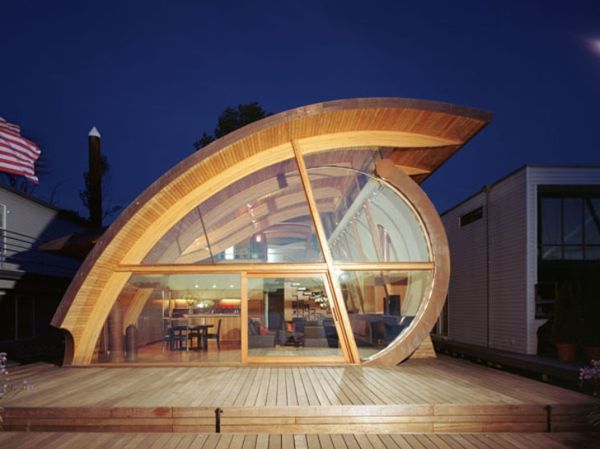
A uniquely designed home goes beyond fulfilling basic needs; it enriches lives, inspires creativity, and contributes to architectural legacy.
A. Enhanced Living Experience and Well-being
A well-designed unique home profoundly impacts the daily lives of its inhabitants.
- Personal Sanctuary: Creates a deeply personal and comfortable refuge that truly feels like “home,” fostering relaxation and emotional well-being.
- Improved Daily Flow: Spaces designed around specific routines and preferences lead to more efficient, intuitive, and enjoyable daily life.
- Connection to Environment: Thoughtful integration with nature and maximization of natural light can reduce stress, improve mood, and enhance overall health.
- Inspiration and Creativity: An inspiring environment can foster creativity, productivity, and a sense of wonder, making the home a catalyst for personal growth.
- Adaptability to Life Stages: A uniquely designed home can be flexible enough to adapt to changing family needs – from young children to aging parents – potentially eliminating the need to move.
B. Architectural Innovation and Legacy
Unique homes push the boundaries of design, influencing future architectural trends and leaving an enduring mark.
- Pioneering New Forms: Bold, experimental designs challenge conventional notions of residential architecture, inspiring others and contributing to the evolution of the field.
- Showcasing Sustainable Practices: Unique homes often serve as testbeds for innovative sustainable technologies and passive design strategies, demonstrating their viability and effectiveness.
- Contributing to Architectural Heritage: Landmark unique homes become part of a region’s or city’s architectural heritage, influencing future generations of designers and becoming objects of study.
- Setting New Standards: Successful unique designs can set new benchmarks for quality, functionality, and aesthetic appeal in residential architecture.
C. Community and Cultural Enrichment
Unique homes contribute to the character and identity of their neighborhoods and broader communities.
- Enhancing Streetscapes: Thoughtful and distinctive designs add visual interest, character, and beauty to neighborhoods, moving beyond monotonous suburban sprawl.
- Promoting Local Craftsmanship: Custom homes often rely on local artisans, builders, and material suppliers, supporting local economies and preserving traditional crafts alongside modern techniques.
- Attracting Talent: A city or region known for its innovative and unique architecture can attract creative talent and foster a vibrant design community.
- Inspiring Dialogue: Unique homes can spark conversations about design, sustainability, and the future of living, engaging the public in architectural appreciation.
Challenges and Considerations in Unique Home Design
While the allure of a unique home is strong, the process involves significant complexities and potential hurdles that require careful navigation.
A. Complexity and Cost
Creating a bespoke design is inherently more complex and typically more expensive than building from a standardized plan.
- Higher Design Fees: Custom architectural services involve more in-depth analysis, multiple design iterations, and detailed documentation, leading to higher fees compared to purchasing pre-designed plans.
- Increased Construction Costs: Unconventional forms, specialized materials, custom fabrication, and the need for highly skilled labor can significantly increase construction costs.
- Unforeseen Challenges: Unique designs can encounter unexpected structural, material, or logistical challenges during construction that can lead to delays and cost overruns.
- Time Commitment: The design and construction process for a unique home typically takes much longer than building a standard house.
B. Regulatory and Permitting Hurdles
Pushing design boundaries can sometimes clash with existing regulations.
- Zoning Restrictions: Unique forms or unconventional materials might conflict with local zoning ordinances or homeowner association rules designed for conventional housing.
- Building Code Interpretation: Innovative designs might require special interpretation or variances from standard building codes, which can be a time-consuming and complex process.
- Neighborhood Resistance: Neighbors accustomed to traditional aesthetics might resist a dramatically different design, leading to community pushback or lengthy approval processes.
C. Resale Value and Market Appeal
While often increasing value, “unique” can sometimes be a double-edged sword for resale.
- Niche Market: A highly personalized or avant-garde design might appeal to a very specific niche market, potentially making it harder to sell quickly or at a premium if the buyer pool is limited.
- Subjectivity of Taste: What one person considers a masterpiece, another might find impractical or aesthetically challenging.
- Specialized Maintenance: Unique materials or complex systems might require specialized maintenance that could deter future buyers.
D. Finding the Right Team
The success of a unique home hinges entirely on the expertise and collaborative spirit of the design and construction team.
- Finding the Right Architect: It requires an architect who not only understands the client’s vision but also possesses the creativity, technical expertise, and experience to execute complex, unconventional designs.
- Skilled Builders: Constructing unique homes often demands highly skilled builders and craftsmen who are comfortable with custom fabrication, new materials, and complex details.
- Collaboration: A successful project relies on seamless communication and collaboration between the client, architect, engineers, and builder.
The Future of Unique Home Design
The pursuit of unique homes will only intensify, driven by evolving technologies, growing environmental consciousness, and a deeper desire for personalized living.
A. Hyper-Personalization Through Data and AI
- AI-Assisted Design: AI tools could analyze client preferences, site data, and material properties to generate numerous unique design concepts, accelerating the initial design phase.
- Parametric Design: Leveraging algorithms to create complex, customizable forms that can be easily adapted to specific site conditions or client needs.
- Virtual Reality (VR) for Immersion: Clients will increasingly “walk through” and experience their unique homes in VR before construction begins, allowing for immersive feedback and adjustments.
B. Advanced Manufacturing and Construction Techniques
- 3D Printed Homes: Additive manufacturing (3D printing) offers the potential for rapidly constructing unique, organic forms with minimal waste, making custom homes more affordable and faster to build.
- Modular and Prefabricated Customization: While often associated with uniformity, advanced prefabrication techniques will allow for highly customized modules that can be assembled quickly on-site, combining efficiency with bespoke design.
- Robotics in Construction: Robots could handle repetitive or dangerous tasks, allowing human craftsmen to focus on intricate detailing and quality control.
C. Deeper Integration of Sustainability and Resilience
- Net-Zero and Passive House Standards: Unique homes will increasingly aim for net-zero energy consumption, using advanced insulation, airtight construction, and renewable energy sources.
- Climate-Adaptive Design: Designs that are intrinsically resilient to specific climate change impacts (e.g., flood-resistant foundations, enhanced storm protection, passive cooling for extreme heat).
- Circular Economy Principles: Homes designed for disassembly, using recycled and recyclable materials, and minimizing waste throughout their lifecycle.
- Biophilic Integration: Even more sophisticated integration of nature and natural systems into the home, including advanced indoor air quality systems, living walls, and integrated water features.
D. The Blurring of Physical and Digital Spaces
- Smart Home Ecosystems: Homes will become increasingly intelligent, with AI-powered systems that learn and adapt to occupant preferences for lighting, climate, security, and entertainment.
- Augmented Reality (AR) for Interior Design: AR apps will allow homeowners to virtually “try on” different furniture, finishes, and art within their unique spaces before making purchasing decisions.
- Digital Twins: Creating virtual replicas of unique homes for monitoring performance, predictive maintenance, and simulating future modifications.
Conclusion
Unique Home Design is a powerful testament to the enduring human desire for individuality and a distinct sense of place. It transcends mere construction, evolving into an act of creative collaboration that sculpts living spaces into personalized works of art, imbued with design distinction. By challenging conventional norms, embracing innovative materials and technologies, and meticulously responding to site and lifestyle, these homes not only enhance daily living but also push the boundaries of architectural possibility.
While the journey of crafting a unique home involves complexities in cost, regulation, and team selection, the profound benefits – from unparalleled functionality and enhanced well-being to architectural legacy and sustainable living – are immeasurable. As technology continues to advance and our understanding of human needs deepens, the future of home design will undoubtedly see even greater personalization, deeper integration with nature, and more intelligent, responsive living environments. These unique homes are not just structures; they are living masterpieces, continually evolving canvases that tell the compelling story of those who dwell within.

